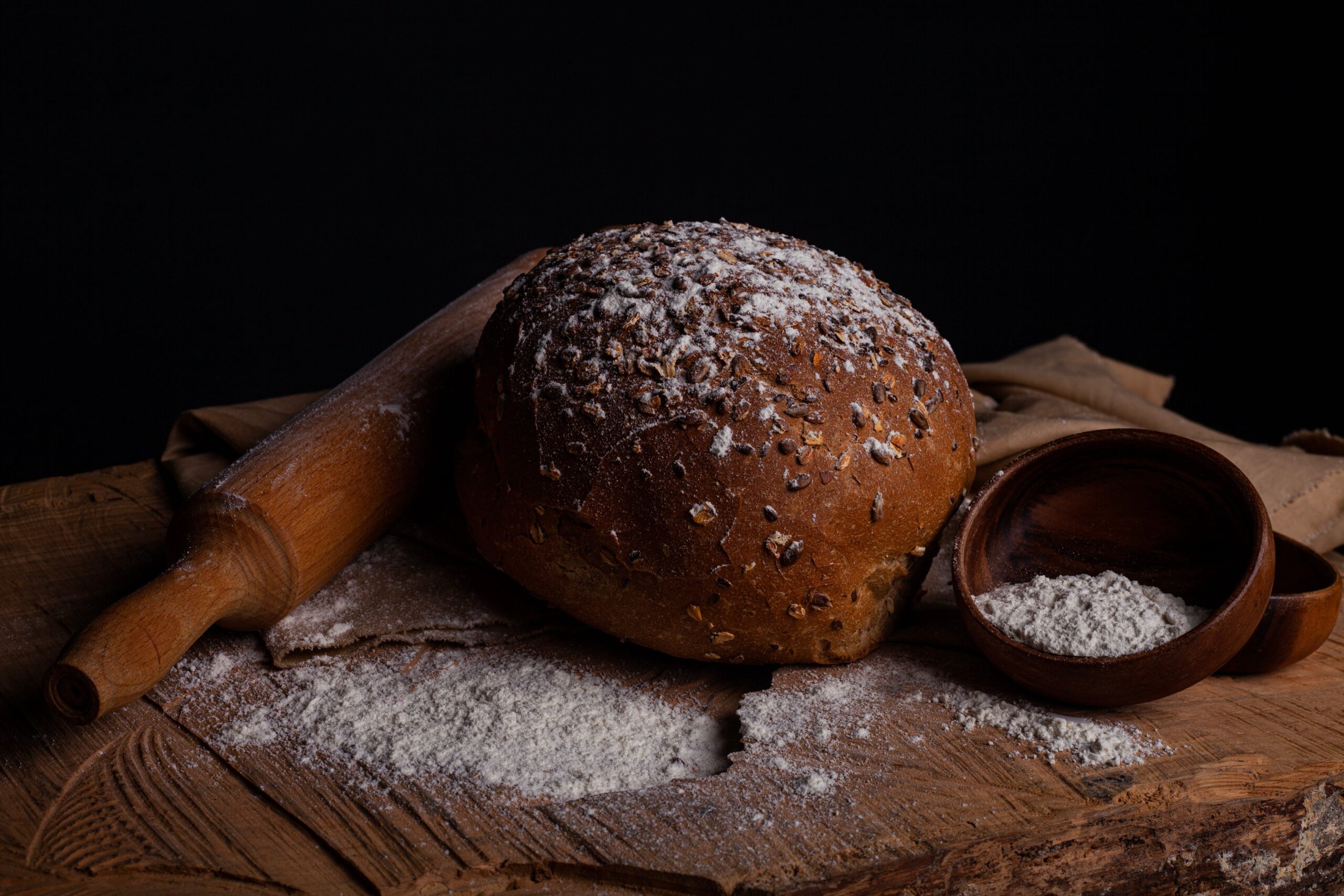How To Use Pinterest Story Pins For Storytelling And Brand Connection?
In this article, you will discover the dynamic potential of Pinterest Story Pins. Whether you are a storyteller or a marketer looking to connect with your target audience, Story Pins can be a game-changer. Unleash your creativity and captivate your viewers as we explore the exciting world of Pinterest Story Pins and learn how to effectively utilize this feature for storytelling and building a strong brand connection. Get ready to bring your stories to life and leave a lasting impression with the power of Story Pins.

What are Story Pins?
Story Pins overview
Story Pins are a unique feature on Pinterest that allow you to create immersive, interactive, and visually appealing stories to engage with your audience. With Story Pins, you can go beyond static images and create dynamic content that captures the attention and imagination of your followers. These pins can include a combination of images, videos, text, and other interactive elements to tell a compelling narrative.
Unlike regular pins that link to external websites or blog posts, Story Pins are self-contained narratives that are designed to be consumed within the Pinterest platform itself. This means that users can easily swipe through the different pages of your story without leaving Pinterest, creating a seamless experience for them.
Benefits of using Story Pins
There are several benefits to using Story Pins as part of your content strategy:
-
Enhanced storytelling capabilities: Story Pins allow you to craft engaging narratives and take your audience on a journey. You can use a combination of images, videos, and text to create an immersive and captivating story.
-
Increased engagement: Story Pins are designed to be interactive, which encourages users to spend more time on your content. This increased engagement can lead to higher click-through rates, increased brand awareness, and even potential sales or conversions.
-
Improved brand connection: Story Pins give you the opportunity to showcase your brand’s personality, values, and unique selling propositions. By crafting compelling stories, you can establish an emotional connection with your audience and build brand loyalty.
-
Expanded reach: Pinterest has a large and active user base, which means that your Story Pins have the potential to reach a wide audience. Additionally, Pinterest’s algorithm is designed to surface relevant and engaging content, giving your Story Pins a better chance of being discovered by new users.
Creating Story Pins
Setting up your Pinterest account
Before you can start creating Story Pins, you’ll need to set up a Pinterest account if you don’t already have one. Setting up an account is easy and only requires a few simple steps:
- Go to Pinterest’s website or download the Pinterest app from your respective app store.
- Click on “Sign up” and choose whether you want to sign up with your email address or with your Google or Facebook account.
- Follow the prompts to complete the setup process, which includes selecting your interests and following some boards.
Accessing the Story Pin feature
Once you have a Pinterest account, you’ll need to verify your website to gain access to the Story Pin feature. Verifying your website helps Pinterest to confirm that you are the owner of the website you’re linking to, which adds credibility to your profile and content.
To verify your website:
- Go to your Pinterest settings.
- Click on “Claim” under the “Account” section.
- Follow the instructions to claim your website by either adding an HTML tag to your website’s code or uploading an HTML file to your website’s root folder.
After successfully verifying your website, the Story Pin feature will be enabled on your account, and you can start creating your own Story Pins.
Building a Story Pin from scratch
Creating a Story Pin from scratch is a straightforward process:
- Click on the “+” button at the bottom of the Pinterest app or website to create a new pin.
- Select the “Create a Story Pin” option.
- Choose the images, videos, and other visual elements you want to include in your story. You can either upload your own media files or use images and videos from the Pinterest library.
- Arrange the visual elements in the order you want them to appear in your story by dragging and dropping them.
- Add captions, text overlays, and stickers to enhance your storytelling.
- Preview your Story Pin to make sure everything looks and works as intended.
- Once you’re satisfied with your story, click on “Publish” to share it with your audience.
Choosing the right format and layout
When creating Story Pins, it’s essential to choose the right format and layout to effectively convey your message. Pinterest offers several layout templates that can help you structure your story, whether it’s a step-by-step guide, a recipe, or a behind-the-scenes look at your brand.
Consider the following tips when choosing a format and layout for your Story Pins:
- Keep it visually appealing: Choose images and videos that are high-quality, visually captivating, and relevant to your story.
- Utilize text overlays: Use text overlays to provide context, add captions, or guide your audience through the story.
- Experiment with different formats: Don’t be afraid to try out different layout templates to see which one works best for your story and resonates with your audience.
- Closely align with your brand identity: Ensure that the colors, fonts, and overall aesthetic of your Story Pins align with your brand to create a consistent and recognizable experience for your audience.
Crafting Compelling Storytelling
Defining your storytelling goals
Before diving into creating Story Pins, it’s essential to define your storytelling goals. This will help ensure that your stories are purposeful, resonate with your target audience, and align with your overall brand strategy.
Take some time to consider the following questions:
- What message do you want to convey through your stories?
- What emotions do you want to evoke in your audience?
- How does your storytelling fit into your broader brand narrative?
- What action do you want your audience to take after consuming your Story Pins?
By clearly defining your storytelling goals, you’ll have a better understanding of the story you want to tell and the impact you want to create.
Understanding your audience
To create compelling Story Pins, it’s crucial to understand your audience. Take the time to research and gather insights about your target audience’s interests, preferences, and pain points. This information will help you tailor your stories to resonate with your audience and meet their needs.
Consider the following strategies for understanding your audience:
- Conduct surveys or polls: Ask your existing audience for feedback or insights through surveys or polls. This will give you direct insights into what they want to see in your Story Pins.
- Analyze Pinterest analytics: Pinterest provides valuable analytics that can help you understand which topics, pins, and formats resonate best with your audience.
- Research keywords and trends: Stay up-to-date with the latest keywords and trends in your industry. This will help you create relevant and timely Story Pins that align with what your audience is searching for.
By understanding your audience, you can create stories that are tailored to their preferences and expectations, increasing the chances of engagement and connection.
Developing a narrative
A compelling narrative is at the heart of every successful Story Pin. To develop a narrative that captivates your audience, consider the following tips:
- Start with a hook: Grab your audience’s attention right from the beginning by starting with a compelling image, video, or opening line. This will pique their curiosity and entice them to continue swiping through your Story Pin.
- Establish a structure: Structure your story with a clear beginning, middle, and end. Guide your audience through the story by arranging your visual elements in a logical and cohesive manner.
- Create a climax: Build suspense and anticipation by leading your audience towards a climax or key moment in your story. This could be a surprising twist, a valuable insight, or a call to action.
- End with a strong conclusion: Wrap up your story with a memorable and impactful conclusion. This could be a summary of key takeaways, a thought-provoking question, or a call to action.
By developing a well-crafted narrative, you can hold your audience’s attention and leave a lasting impression.
Using visuals and captions effectively
Visual elements and captions play a crucial role in storytelling through Story Pins. Here are some best practices to consider:
- Choose captivating visuals: Select high-quality images and videos that are visually appealing and relevant to your story. Use imagery that evokes emotions or provides context.
- Use captions strategically: Captions can add depth and context to your visuals. Use them to provide additional information, guide your audience, or add a touch of personality to your story.
- Keep captions concise: While captions are important, it’s essential to keep them concise and easily readable. Avoid overwhelming your audience with lengthy text that may distract from the visuals.
- Experiment with stickers and text overlays: Pinterest offers a variety of stickers and text overlays that can enhance your Story Pins. Experiment with different options to add visual interest and engagement.
By effectively utilizing visuals and captions, you can create Story Pins that grab attention, convey your message effectively, and engage your audience.
Engaging with Your Brand
Aligning your brand with storytelling
Story Pins provide an excellent opportunity to align your brand with storytelling. By infusing your brand’s values, personality, and unique selling propositions into your stories, you can create a deeper connection with your audience.
Consider the following strategies for aligning your brand with storytelling:
- Know your brand’s voice: Understand your brand’s unique voice and ensure that it is reflected in your storytelling. Whether your brand is humorous, informative, or emotional, stay true to your voice to create a consistent brand experience.
- Showcase your brand’s values: Story Pins allow you to share stories that align with your brand’s values and beliefs. This can help position your brand as authentic, trustworthy, and relatable.
- Highlight your brand’s products or services: If appropriate, incorporate your brand’s products or services into your Story Pins. Show how they can be used or the benefits they provide, helping to drive awareness and potential conversions.
By aligning your brand with storytelling, you can create an emotional connection with your audience and establish a memorable brand presence on Pinterest.
Building a cohesive brand identity
Consistency is key when it comes to building a cohesive brand identity. This is true for both your storytelling and overall brand presence on Pinterest. Consider the following tips:
- Define your brand’s visual elements: Create a consistent aesthetic for your Story Pins by defining the colors, fonts, and visual style that align with your brand. This will help your pins stand out and be easily recognizable.
- Develop a consistent tone of voice: Establish a consistent tone of voice for your captions and text overlays. This consistency will contribute to your brand’s overall personality and voice.
- Use brand hashtags: Create and use hashtags that are unique to your brand. This will help your audience find more of your content and contribute to brand discoverability.
- Incorporate your logo or branding elements: Find tasteful ways to incorporate your logo or branding elements into your Story Pins. This subtly reinforces your brand identity and increases brand recall.
By building a cohesive brand identity, you can create a unified experience for your audience and foster a stronger brand connection.
Including your brand in Story Pins
When creating Story Pins, it’s important to find ways to include your brand without being overly promotional or invasive. Consider the following strategies:
- Use subtle branding elements: Incorporate your brand’s colors, fonts, or logo in a subtle and tasteful way within your Story Pins. This way, your audience will recognize your brand without feeling overwhelmed by excessive promotion.
- Integrate your products or services naturally: If relevant to your story, incorporate your products or services naturally. Showcasing their benefits or usage can help generate interest and promote brand recognition.
- Mention your brand in captions: Write captions that mention your brand, especially if it’s directly related to the story you’re telling. This helps reinforce brand recognition and encourages your audience to connect the story with your brand.
By including your brand in Story Pins, you can create a cohesive and memorable brand presence while maintaining an engaging and non-intrusive storytelling experience for your audience.
Using hashtags and keywords
Using hashtags and keywords strategically can significantly improve the discoverability of your Story Pins. Here’s how to make the most of them:
- Research relevant keywords: Conduct keyword research to identify the most relevant and popular keywords in your industry or niche. Use these keywords in your Story Pin descriptions to increase the chances of them appearing in related searches.
- Utilize Pinterest trends: Stay informed about the latest Pinterest trends and incorporate relevant keywords or hashtags into your Story Pins. This can help you tap into current conversations and boost your content’s visibility.
- Create branded hashtags: Develop unique hashtags that are specific to your brand or campaign. Include these branded hashtags in your Story Pins to encourage user-generated content and make it easier for your audience to find more of your brand-related content.
By strategically using hashtags and keywords, you can maximize the reach and discoverability of your Story Pins, driving more engagement and connection with your audience.

Maximizing Engagement and Reach
Optimizing Story Pin descriptions
When creating Story Pins, don’t overlook the importance of optimizing your descriptions. Here’s how to optimize your Story Pin descriptions for better engagement and reach:
- Use relevant keywords: Incorporate relevant keywords within your Story Pin descriptions to make them more discoverable in search results and related pins.
- Include a call to action: Encourage your audience to take action by including a clear call to action in your Story Pin descriptions. This could be a request to save, share, or visit your website to learn more.
- Keep descriptions concise: Keep your descriptions concise and to the point. This makes them easier to read and digest, increasing the chances of your audience engaging with your pins.
- Add additional context: If necessary, provide additional context or information about your story in the description. This can help your audience better understand and appreciate your content.
By optimizing your Story Pin descriptions, you can increase their visibility, engagement, and ultimately, the connection with your audience.
Leveraging Pinterest SEO
Pinterest is a search engine, and optimizing your Story Pins for Pinterest SEO can significantly improve their visibility and reach. Consider the following tips:
- Conduct keyword research: Identify relevant keywords and incorporate them into your Story Pin descriptions, titles, and even the filenames of the media files you’re using.
- Use specific, descriptive titles: Craft titles that accurately describe the content of your Story Pins and include relevant keywords. This will help Pinterest’s algorithm understand and categorize your pins better.
- Utilize hashtags strategically: Research popular and trending hashtags in your niche or industry. Incorporate these hashtags into your Story Pins to increase their visibility in related searches.
- Engage with other pins: Like, comment, and share other pins that are relevant to your niche or industry. This engagement can help increase your visibility and attract more followers to your account.
By implementing these Pinterest SEO strategies, you can improve the visibility and discoverability of your Story Pins, reaching a wider audience and fostering brand connection.
Promoting Story Pins on other platforms
To maximize the reach of your Story Pins, consider promoting them on other platforms or channels where your target audience is active. Here are some ideas:
- Share on social media: Share links to your Story Pins on other social media platforms like Facebook, Twitter, or Instagram. Direct your followers to your Pinterest profile or specific boards where your Story Pins are located.
- Embed Story Pins on your website or blog: If you have a website or blog, embed your Story Pins into relevant articles or pages. This can help drive traffic to your Pinterest profile and increase the engagement with your Story Pins.
- Send out newsletters or email updates: If you have a mailing list, include links to your Story Pins in your newsletters or email updates. This allows your subscribers to easily access and engage with your content.
By promoting your Story Pins on other platforms, you can increase their visibility, attract new followers, and strengthen the connection with your audience.
Collaborating with other creators
Collaborating with other creators can be a powerful way to expand your reach and connect with new audiences. Consider the following collaboration opportunities:
- Guest Story Pins: Invite other creators or influencers in your industry to contribute and create their own Story Pins as guests on your Pinterest account. This can help you tap into their followers’ base and provide fresh perspectives and content.
- Cross-promotions: Collaborate with other creators to cross-promote each other’s Story Pins. This can involve sharing links, mentioning each other in captions, or even creating joint Story Pins.
- Influencer campaigns: Partner with influencers or micro-influencers to create Story Pins that promote your brand or products. Their influence and reach can help amplify the visibility of your Story Pins and generate new followers.
By collaborating with other creators, you can tap into new audiences, increase the reach of your Story Pins, and create a sense of community within your niche.
Measuring Success
Analyzing Story Pin metrics
Analyzing Story Pin metrics is crucial to understanding the performance and impact of your Story Pins. Pinterest provides useful analytics that can help you gain insights into various performance metrics, including:
- Impressions: The number of times your Story Pins were displayed to Pinterest users.
- Saves: How many users saved your Story Pins to their own boards.
- Clicks: The number of clicks your Story Pins received, indicating user engagement.
- Engagement rate: The percentage of users who engaged with your Story Pins, such as swiping, tapping, or reacting to them.
- Exit rate: The percentage of users who exited your Story Pins before reaching the final page.
By analyzing these metrics, you can measure the success of your Story Pins, identify trends, and make data-driven decisions to optimize your storytelling strategy.
Identifying key performance indicators (KPIs)
To measure the success of your Story Pins effectively, it’s essential to identify key performance indicators (KPIs) specific to your brand and goals. Here are some KPIs you may want to consider:
- Impressions and reach: Monitor the number of impressions and reach your Story Pins are generating. This indicates how many users your content is reaching and provides insights into your content’s visibility.
- Engagement rate: Track the engagement rate of your Story Pins, including the number of saves, clicks, and engagement actions. This shows how effectively your Story Pins are capturing your audience’s attention and driving interaction.
- Click-through rate (CTR): Measure the CTR of your Story Pins to gauge how successful they are in driving traffic to your website or other desired external destinations.
- Follower growth: Monitor the growth of your Pinterest followers, as this indicates how well your Story Pins are attracting new audience members and building brand awareness.
By identifying and tracking relevant KPIs, you can assess the effectiveness of your Story Pins and make informed decisions to optimize your content and storytelling strategy.
Adjusting and refining your strategy
Regularly adjusting and refining your storytelling strategy is essential to keep your Story Pins fresh, engaging, and effective. Here’s how to refine your strategy:
- Analyze performance metrics: Continuously review your Story Pin metrics to identify patterns, trends, and potential areas for improvement. Look for high-performing pins and learn from their success.
- A/B testing: Experiment with different approaches, such as different visuals, captions, or formats, to see which ones resonate best with your audience. A/B testing allows you to compare the performance of different variations of your Story Pins and refine your strategy accordingly.
- Seek feedback from your audience: Engage with your audience and ask for feedback or input on your Story Pins. This can provide valuable insights and help you understand what content your audience wants to see more of.
- Stay informed about industry trends: Keep up with the latest trends and topics in your industry or niche. Incorporating current trends into your Story Pins can help keep your content relevant and engaging.
By constantly adjusting and refining your storytelling strategy, you can optimize the impact and effectiveness of your Story Pins and maintain a strong connection with your audience.
Experimenting with different approaches
Don’t be afraid to experiment with different approaches to storytelling in your Story Pins. This can help you discover what resonates best with your audience and keep your content fresh and engaging. Consider the following ideas for experimentation:
- Try different formats: Experiment with different layout templates and formats to see what works best for your stories. This could include step-by-step tutorials, before-and-after transformations, or interactive quizzes.
- Vary the length of your stories: Test different story lengths to determine the optimal duration that keeps your audience engaged without losing their interest. Some stories may require a shorter duration, while others may benefit from a longer storytelling experience.
- Involve your audience: Consider creating Story Pins that actively involve your audience, such as polls, quizzes, or interactive storytelling elements. This encourages participation and makes your audience feel more connected to your brand.
By experimenting with different approaches, you can find the storytelling style and format that resonates best with your audience, ultimately leading to increased engagement and brand connection.

Best Practices and Tips
Consistency is key
Consistency is key when it comes to Story Pins and maintaining brand connection. Here are some best practices to ensure consistency:
- Establish a consistent posting schedule: Regularly publish Story Pins to maintain a consistent presence and keep your audience engaged. Whether it’s daily, weekly, or monthly, establish a posting frequency that works for your brand and stick to it.
- Maintain a cohesive brand identity: Use consistent colors, fonts, and visual elements throughout your Story Pins to create a cohesive and recognizable brand identity.
- Stay true to your brand’s voice: Ensure that your storytelling aligns with your brand’s voice and personality. Consistency in tone and messaging helps reinforce your brand identity.
By being consistent, you can establish a strong brand presence, build trust with your audience, and foster a deeper brand connection.
Maintaining a schedule for Story Pins
To make the most of Story Pins and maintain consistency, it’s essential to establish a schedule for creating and publishing your content. Consider the following tips:
- Plan ahead: Create a content calendar or schedule in advance to ensure a steady flow of Story Pins. This allows you to plan your storytelling, imagery, and captions.
- Align with your brand’s goals: Ensure that your Story Pins align with your brand’s goals and overall content strategy. Each pin should have a purpose and contribute to your brand’s narrative.
- Optimize for peak times: When scheduling your Story Pins, consider posting during peak times when your target audience is most likely to be active on Pinterest. You can find these peak times by experimenting and analyzing engagement metrics.
- Test different posting frequencies: Experiment with different posting frequencies to find the ideal balance for your brand. This will ensure that you’re providing enough content to engage your audience without overwhelming them.
By maintaining a schedule for your Story Pins, you can stay organized, provide consistent content, and maximize your audience’s engagement.
Keeping up with trends and popular content
To maintain relevance and capture your audience’s attention, it’s important to stay up-to-date with the latest trends and popular content on Pinterest. Consider the following strategies:
- Follow relevant boards and accounts: Follow boards and accounts that align with your niche or industry. This allows you to stay informed about the latest trends and topics that are resonating with your target audience.
- Utilize Pinterest’s “Today” tab: Utilize Pinterest’s “Today” tab, which highlights current trends, popular content, and timely topics. Incorporating these trends into your Story Pins can help increase their visibility and engagement.
- Engage with popular content: Like, comment, and share popular content that is relevant to your brand or niche. Engaging with popular content can help increase your brand’s exposure and attract new followers.
By staying informed about trends and popular content, you can create Story Pins that are fresh, relevant, and engaging for your audience.
Engaging with your audience through comments and interactions
Engaging with your audience is key to fostering brand connection and building a loyal community. Here are some tips for engaging with your audience through comments and interactions:
- Respond to comments: Take the time to respond to comments on your Story Pins. Engage in conversations, answer questions, and show appreciation for feedback. This demonstrates that you value your audience’s input and encourages further interaction.
- Comment on other pins: Engage with your audience by commenting and interacting with their pins. This can help build relationships and attract new followers to your profile.
- Encourage user-generated content: Encourage your audience to create their own Story Pins based on your content or related themes. This increases engagement and creates a sense of community around your brand.
By actively engaging with your audience through comments and interactions, you can strengthen brand connection, foster loyalty, and create a thriving community around your Story Pins.
In conclusion, Story Pins are a powerful tool for storytelling and brand connection on Pinterest. By understanding how to create compelling Story Pins, align them with your brand, maximize engagement and reach, and measure their success, you can effectively engage with your audience, drive brand connection, and achieve your marketing goals. Remember to experiment, stay consistent, and actively engage with your audience to create a memorable and impactful storytelling experience on Pinterest.




